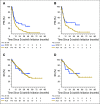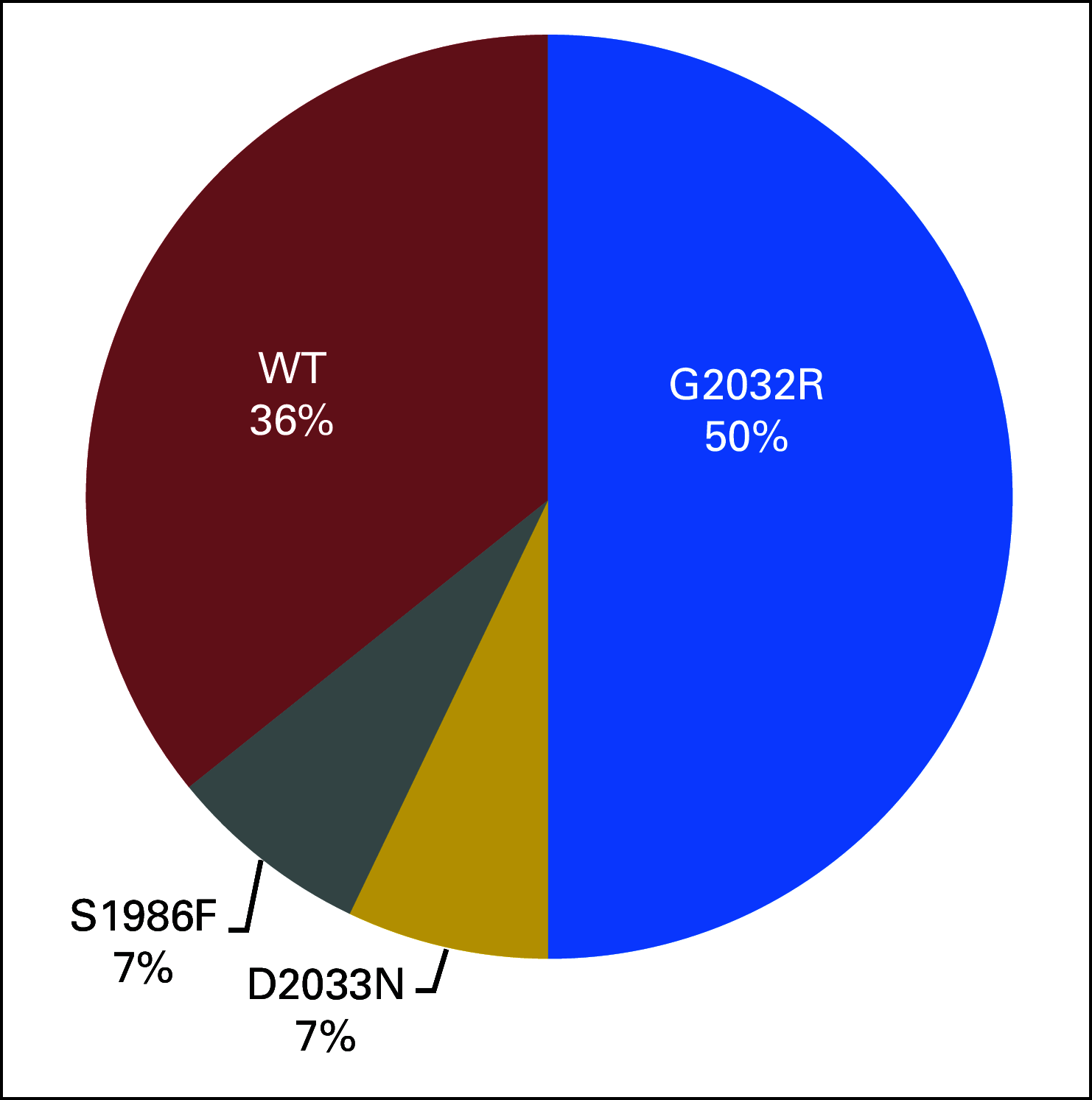Patterns of Metastatic Spread and Mechanisms of Resistance to Crizotinib in ROS1-Positive Non-Small-Cell Lung Cancer
- PMID: 29333528
- PMCID: PMC5766287
- DOI: 10.1200/PO.17.00063
Patterns of Metastatic Spread and Mechanisms of Resistance to Crizotinib in ROS1-Positive Non-Small-Cell Lung Cancer
Abstract
Purpose: The ROS1 tyrosine kinase is activated through ROS1 gene rearrangements in 1-2% of non-small cell lung cancer (NSCLC), conferring sensitivity to treatment with the ALK/ROS1/MET inhibitor crizotinib. Currently, insights into patterns of metastatic spread and mechanisms of crizotinib resistance among ROS1-positive patients are limited.
Patients and methods: We reviewed clinical and radiographic imaging data of patients with ROS1- and ALK-positive NSCLC in order to compare patterns of metastatic spread at initial metastatic diagnosis. To determine molecular mechanisms of crizotinib resistance, we also analyzed repeat biopsies from a cohort of ROS1-positive patients progressing on crizotinib.
Results: We identified 39 and 196 patients with advanced ROS1- and ALK-positive NSCLC, respectively. ROS1-positive patients had significantly lower rates of extrathoracic metastases (ROS1 59.0%, ALK 83.2%, P=0.002), including lower rates of brain metastases (ROS1 19.4%, ALK 39.1%; P = 0.033), at initial metastatic diagnosis. Despite similar overall survival between ALK- and ROS1-positive patients treated with crizotinib (median 3.0 versus 2.5 years, respectively; P=0.786), ROS1-positive patients also had a significantly lower cumulative incidence of brain metastases (34% vs. 73% at 5 years; P<0.0001). Additionally, we identified 16 patients who underwent a total of 17 repeat biopsies following progression on crizotinib. ROS1 resistance mutations were identified in 53% of specimens, including 9/14 (64%) non-brain metastasis specimens. ROS1 mutations included: G2032R (41%), D2033N (6%), and S1986F (6%).
Conclusions: Compared to ALK rearrangements, ROS1 rearrangements are associated with lower rates of extrathoracic metastases, including fewer brain metastases, at initial metastatic diagnosis. ROS1 resistance mutations, particularly G2032R, appear to be the predominant mechanism of resistance to crizotinib, underscoring the need to develop novel ROS1 inhibitors with activity against these resistant mutants.
Keywords: ALK; RET; ROS1; acquired resistance; crizotinib.
Conflict of interest statement
Justin F. Gainor
Diane Tseng
Satoshi Yoda
No relationship to disclose
Ibiayi Dagogo-Jack
No relationship to disclose
Luc Friboulet
No relationship to disclose
Jessica J. Lin
No relationship to disclose
Harper G. Hubbeling
No relationship to disclose
Leila Dardaei
No relationship to disclose
Anna F. Farago
Katherine R. Schultz
No relationship to disclose
Lorin A. Ferris
No relationship to disclose
Zofia Piotrowska
James Hardwick
Donghui Huang
Mari Mino-Kenudson
A. John Iafrate
Aaron N. Hata
Beow Y. Yeap
Alice T. Shaw
Figures






References
-
- Rikova K, Guo A, Zeng Q, et al. : Global survey of phosphotyrosine signaling identifies oncogenic kinases in lung cancer. Cell 131:1190-1203, 2007 - PubMed
Grants and funding
LinkOut - more resources
Full Text Sources
Other Literature Sources
Miscellaneous

